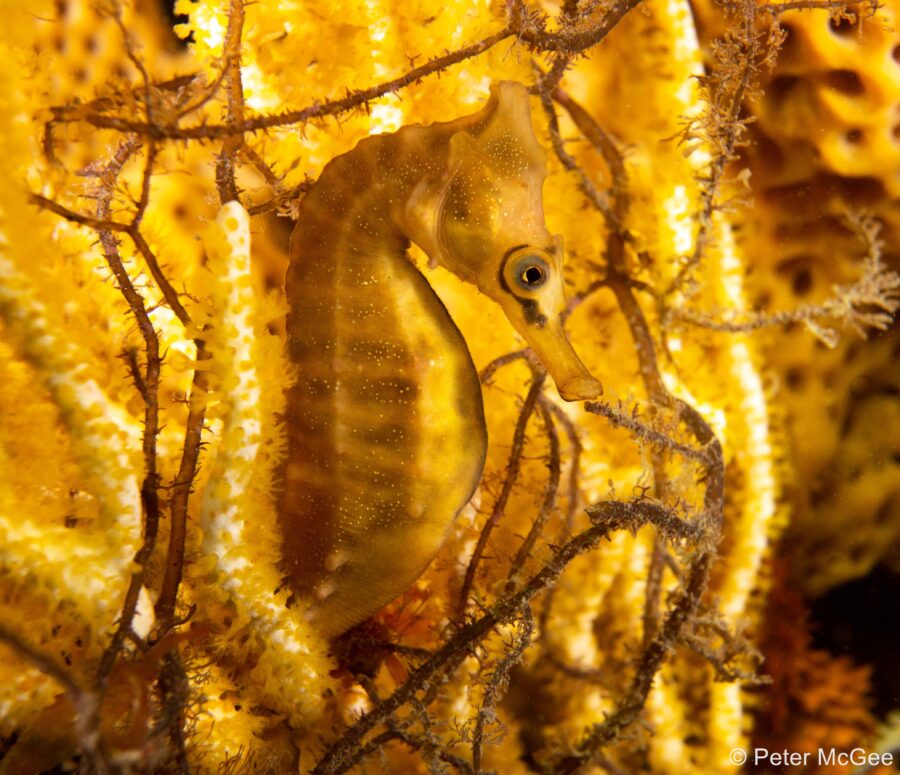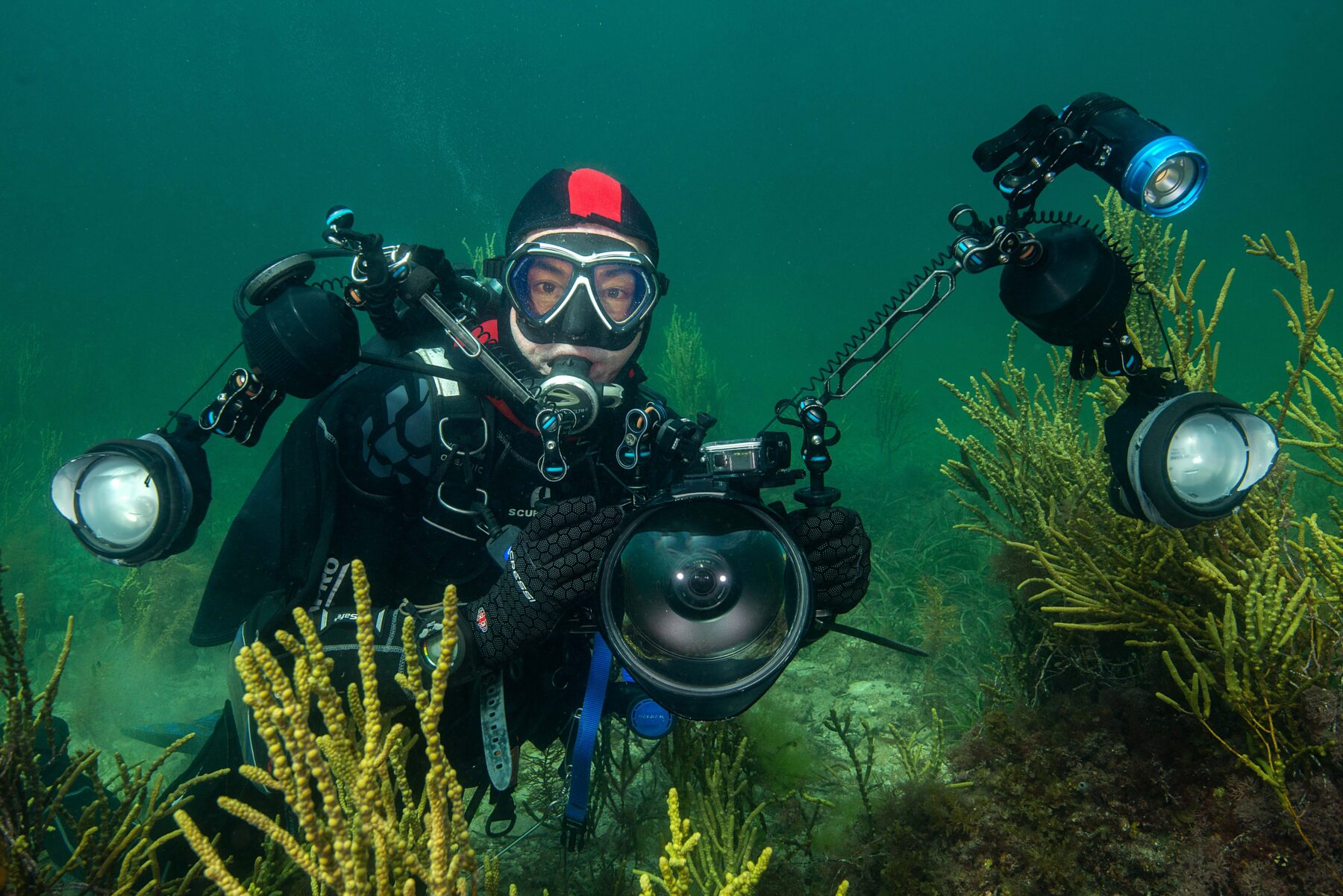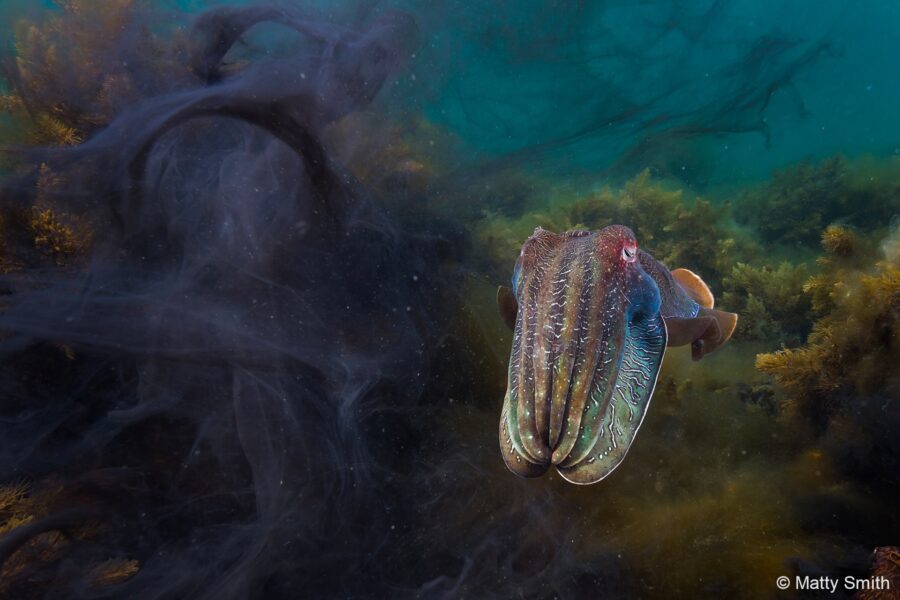The story behind the photo: ‘Golden Seahorse’ by Pete McGee

Pete McGee was recently crowned winner of the Threatened Species category in the 2023 Australian Geographic Nature Photographer of the Year (AGNPOTY) competition.
His winning image, titled Golden Seahorse, shows an endangered White’s seahorse (Hippocampus whitei) at Nelson Bay, New South Wales.
“White’s seahorses have the ability to change colour and blend with habitat, including the beautiful yellow soft coral in this image,” explains Pete.
Can you tell us the back story of this photo?
This image was taken when some travel was permitted during the COVID pandemic. I didn’t leave home much in 2020 so this was a memorable trip away.
What is your connection to the subject matter?
I love seahorses like most people. They are just so wonderfully unusual. Did you know the males have a pouch to hold the eggs and give birth? I often see them diving in Sydney Harbour and always need to stop to observe them.
Where is it taken, and what led you to this site?
The image was taken on a weekend trip to Nelson Bay with some dive friends. Shore diving there is at high tide when current is slack. This was taken on a night dive at Pipeline.
Were you unexpectedly there or had you planned to cover this moment?
It’s always a bit of a treasure hunt on any dive. I was searching with my torch for interesting macro subjects particularly blue-line octopus and anglerfish. I wasn’t particularly looking for seahorses but the beautiful yellow seahorse among the coloured and textured soft coral caught my eye.

What are the technical challenges of photographing this kind of scene?
Underwater is a dynamic environment and there are many challenges. Seahorses often face away from divers and there are currents and buoyancy issues to manage to name a few. Lighting, subject eye contact and focus are the key challenges. It takes patience as you need to wait for the (brief) moment when the dynamic variables align to get the shot.
How did you prepare to take this image?
We timed the dive to coincide with slack at high tide. I wasn’t familiar with the site need to discuss with buddies to get basic orientation before entering the water. The equipment I took was fairly typical underwater macro camera set up with strobe lights, although I took a 30mm macro lens which is wider than most so I could shoot larger macro subjects I hoped to encounter.
Did you have special equipment?
Underwater photographers after have an array of special equipment. Depending on the dive site and what you want to shoot, decisions need to be made before entering the water on camera set up and what you can bring. Strobe lights are needed for nearly all dives below a few metres. I also often use a snoot at night to narrow the light beam and reduce backscatter, and a wet lens to allow me to reduce the focal length, although not in this case.
Have you covered this topic/subject before?
I often take seahorse photos but it’s when you see them exhibiting interesting behaviour or in a colourful setting that you really get excited.
Why is this form of photography important to you?
I love the ocean and everything that lives in it. There are so many incredible and diverse species wherever you go. But there are human pressures on the marine environment and taking underwater photos allows me to share its brilliance and remind people of the need to protect the ocean.
Any additional thoughts?
Over 70% of our planet is ocean so I’d encourage everyone to get out there and enjoy it, whether you dive, free dive, surf or snorkel.


